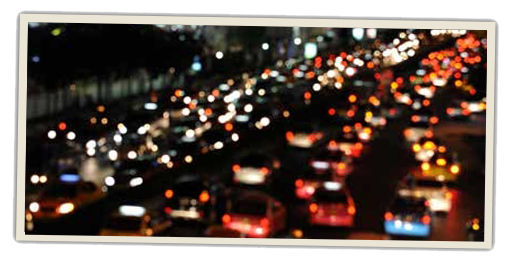
All Locations Closed for Christmas & New Years
All locations closed Thurs-Fri Dec 25-26 & Thurs 1 Jan.
Sessions 31 - 40
Session 31-40
Driving After Sunset

Driving after sunset presents a new set of challenges. The obvious challenges are glare and reduced visibility. The first routes your teen drives after sunset should be on low volume roadways that the new driver has had some driving experience on during daylight. The guided practice night driving sessions should be integrated with the 30 daylight sessions.
Vision is severely limited at night. The vehicle’s narrow headlight beams limit the driver’s view of the area ahead, and the off-road area may not be visible at all. In addition, the new driver will find it difficult to determine the size, speed, color, and distance of objects. Coach your teen to try to look at the outer fringes of his or her headlight beams to get the best picture of possible dangers ahead and to the sides of the vehicle. Emphasize the need to reduce speed and to increase following distance. In addition, dirt on the headlight lenses can reduce their effectiveness by as much as 75%.
Avoid using a light inside the car because this will also greatly reduce your night vision.
Overdriving Your Headlights
Overdriving your headlights occurs when the vehicle’s stopping distance is greater than the area illuminated by the headlights. To determine whether you are overdriving your headlights, have your teen select an object the moment the headlights pick it up, and count off 6 seconds. If the object is still ahead of the vehicle, you are driving at a safe speed. If you have passed it, you are driving too fast. Remind your teen that posted speed limits are calculated for daylight driving and are often too fast for nighttime conditions.
Blinded
When blinded by the headlights of oncoming cars, coach your teen to look to the right-hand side of the lane and to make brief, frequent glances at the target ahead keeping the oncoming cars in the corner of the driver’s vision.
Glare
Glare recovery is the time it takes your eyes to adjust after being blinded by bright lights. Oncoming traffic is the primary source of glare when driving at night. Glare is also caused by the headlights of cars behind you and a dirty windshield. Adjust your rearview mirror to the “night” setting and side view mirrors to reduce glare. Dirt on glass will reflect rays of light, either from the sun or headlights, and add to glare.